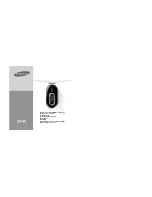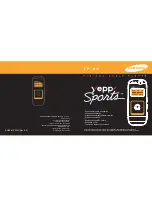
Media player
Apacer’s AL720 is a small and quiet hardware
media player, nicely designed with a simple
and elegant case that doesn’t stick out like a
sore thumb in a living room.
The AL720 outputs video through HDMI
and component at up to 1080p resolution,
60Hz framerate. Audio is also carried over
HDMI, but there’s an optical S/PDIF
connection too – potentially useful if you’re
hooking up to a high-end sound system. Two
USB 2.0 ports let you hook up an external
drive and a computer to the AL720.
You don’t need to be a geek to use the
AL720 thanks to a simple-to-navigate user
interface. As long as your content is of high
enough quality for the big screen, the AL720
playback is great, with very good image and
audio quality.
Delving into the tech specs reveals that
Apacer built the AL720 around the new
RealTek RTD1185 system on a chip that
provides HD media playback of many
common formats such as MPEG-1, 2 and
4, H.264 and plenty of those less common,
such as RMVB. While it wasn’t possible to
test every single format out there, the AL720
had no problems with the files I threw at it and
played back video in 1080p high definition
with no trouble.
A new feature of the RealTek chip is that
it plays back multi-channel DTS surround
sound, as found in Blu-Ray movies. DTS
and Dolby Digital AC3 audio worked great
through an Anthem MX 500 AV receiver, over
an HDMI connection.
The AL720 adds a Western Digital Scorpio
2.5in 500 or 640GB hard drive for media
storage inside the device, extending its use to
more than playback. This isn’t a new thing, but
it’s a nice feature for $249 (500GB) and $269
(640GB) respectively.
The onboard storage means you can take
your content with you and play it back
elsewhere, with only the AL720: no external
storage is required. It also saves you the upfront
expense of an external hard drive, which would
be a must with a storage-less media player.
However, as you start filling up the hard drive
with your content you run into a couple of
nuisances. First, a network connection is an
optional extra. You have to buy a Wi-Fi dongle
that eats up one of the two USB ports.
Second, unlike other media players we’ve
tried, the AL720 doesn’t have a wired Ethernet
port. This means you’re relegated to using the
USB 2.0 port for content transfers. On the
upside, that’s easy enough, and faster than your
typical 100Mbit/s home LAN at between 180
to 200Mbit/s.
Downside? During transfer, you’re locked
out of the AL720 and can’t watch or listen
to other content until you unplug the USB
cable from the media player. Working this out
from the manual is hard though, as its poorly
written instructions take considerable effort
to decipher.
While I like the results the Apacer AL720
produces, I’d be happier if it came with a
wired Ethernet port or a fast 802.11n wireless
connection as well. As it is, it feels overly
limited with network access relegated to an
optional extra.
Juha Saarinen
Apacer AL720
cut off:
Network
connectivity is an
optional extra.
TheLounge
June 2011
pcworld.co.nz
93
aT a gLance
●
compact, good looking design
●
Supports a wide range of video,
audio and image formats
●
User-friendly interface
●
no wired network connection at all,
and no wireless out of the box
apacer aL720
RRP incl GSt:
$249 (500gB), $269 (640gB)
contact:
ap.apacer.com
A multiformat media player with DTS
surround sound support, a neat little
package and a good price; shame about
the missing network connection.



















